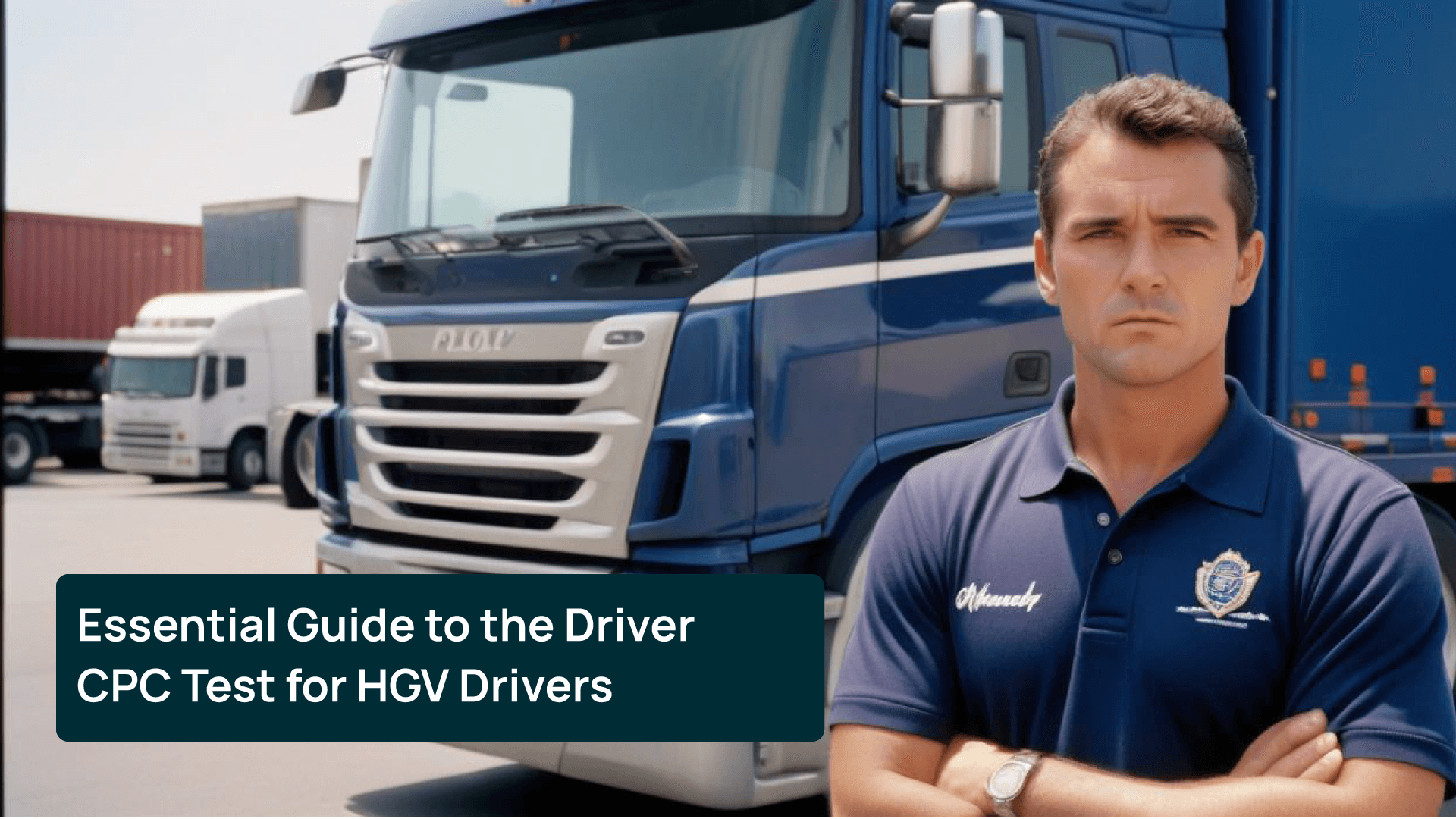The Driver CPC (Certificate of Professional Competence) is a qualification required for professional drivers who operate vehicles over 3.5 tonnes or vehicles that carry more than 9 passengers. Established by the European Union, the Driver CPC ensures that drivers meet the necessary professional competence standards to drive safely and responsibly. Whether you’re new to the industry or an experienced driver needing to renew your qualification, understanding the requirements and tests involved in obtaining a Driver CPC is essential.
This guide provides an in-depth overview of the Driver CPC qualification, including the steps you need to take to obtain it, the tests involved, and how to stay compliant with the training requirements throughout your career.
What is the Driver CPC?
The Driver CPC is a mandatory certification for all professional drivers. It was introduced to ensure that drivers continue to meet the standards set for professional driving in the UK and across Europe. The Driver CPC qualification involves both an initial qualification process and periodic training throughout a driver’s career.
The Driver CPC consists of a series of tests, including theory tests, practical exams, and ongoing periodic training that must be completed every five years. The certification aims to ensure drivers possess the knowledge and skills required to operate safely and effectively on the roads.
Who Needs a Driver CPC?
Anyone wishing to drive professionally as an HGV driver or a PCV driver needs to obtain the Driver CPC qualification. The qualification is mandatory for those driving vehicles over 3.5 tonnes (HGV) or vehicles carrying more than 9 passengers (PCV), provided the driver is receiving payment for driving.
There are some Driver CPC exemptions, such as for those who drive vehicles not used for hire or reward or those who hold a vocational licence that was obtained before the introduction of the Driver CPC qualification. Additionally, drivers of vehicles under 3.5 tonnes or those who don’t drive for commercial purposes may not need to hold a Driver CPC card.

The Driver CPC Test
The Driver CPC test consists of multiple components, including a theory test, hazard perception test, case study exam, and a practical driving test. Each component is designed to assess a driver’s knowledge, skills, and ability to operate vehicles safely in various driving conditions. Here’s an overview of each test component:
1. Multiple Choice Theory Test
The first part of the Driver CPC qualification involves a multiple-choice theory test. This test assesses your knowledge of road safety, traffic signs, legal requirements, and vehicle safety. The test contains 100 questions, and you need to score at least 85 out of 100 to pass.
It’s essential to study for this part of the test, using practice questions and interactive multiple-choice questions available from driver training centres. Many online resources and apps can help you prepare by simulating the actual test format and allowing you to check your answers.
2. Hazard Perception Test
The hazard perception test is designed to evaluate your ability to identify potential hazards while driving. During the test, you’ll watch 19 video clips that simulate real-life driving situations, and your task is to spot hazards as they develop. The pass mark is 67 out of 100.
In this part of the test, the hazard perception part is crucial for assessing your ability to react quickly to road situations. Practicing with online resources and taking mock tests will help you become familiar with spotting hazards and reacting in a timely manner.
3. Case Studies
The case studies portion of the Driver CPC qualification tests your ability to apply the knowledge you gained during the theory test to real-life scenarios. The test consists of 6-8 case studies, with each case featuring 5-10 questions. These scenarios challenge you to demonstrate your understanding of road safety, traffic signs, and vehicle controls in various practical situations.
The case studies require you to use your judgment to assess each scenario and make decisions based on the safety rules and regulations you’ve learned. You need to score 40 out of 50 to pass this part of the test.
4. Practical Driving Test
Once you pass the theory tests, you will need to complete the practical driving test. This test evaluates your actual driving skills, focusing on your ability to operate the vehicle safely and efficiently. The test will assess your skills in vehicle handling, including parking, reversing, and driving on public roads. You will also be tested on vehicle safety checks, such as ensuring that the vehicle is roadworthy before you begin driving.
The practical test is often considered one of the most challenging parts of the Driver CPC qualification. It’s essential to get adequate practical training before taking the test. Driver training centres often offer mock tests to simulate the real exam conditions and help you prepare.
Preparing for the Driver CPC Test
Preparing for the Driver CPC test requires a thorough understanding of the test format, knowledge of road safety, and practical driving skills. Here are some tips to help you prepare effectively:
- Understand the Test Components: Familiarize yourself with each part of the test, including the multiple-choice theory test, the hazard perception test, and the case study exam.
- Use Practice Tests: Utilize online practice tests and mock tests to familiarize yourself with the test format and ensure that you’re prepared for each part. Many training providers offer resources such as interactive multiple-choice questions and simulated hazard perception videos to help you practice.
- Study the Highway Code: Understanding the Highway Code is crucial for passing the theory test. Make sure you’re comfortable with the rules of the road, traffic signs, and vehicle safety regulations.
- Practical Driving Practice: Spend plenty of time on the road practicing the skills you’ll be tested on during the practical driving test. Enlist the help of a qualified driving instructor or attend a driver training centre to improve your driving ability.
- Take Driver CPC Training: It’s also beneficial to attend driver CPC training sessions that cover the key areas of road safety, vehicle safety, and professional driving. This training will help you prepare for the Driver CPC part and ensure you meet the competency standards required for the test.

Periodic Training and Renewal
After obtaining your Driver CPC card, you’ll need to complete 35 hours of periodic training every five years to maintain your qualification. This training is designed to keep your skills and knowledge up-to-date and ensure you continue to meet the professional competence standards required for professional driving.
Periodic training is flexible and can be completed in 7-hour blocks, making it easier to fit into your schedule. You can choose from a variety of Driver CPC training courses offered by approved training providers. The training will cover a wide range of topics, including road safety, traffic laws, and vehicle maintenance.
Maintaining Your Driver CPC Card
To continue driving professionally, you must complete your periodic training before the expiration date on your Driver CPC card. If you fail to complete the required training, your Driver CPC card may become invalid, which could affect your ability to work as an HGV driver or PCV driver. Always ensure that your Driver CPC card is current and carry it with you whenever you drive professionally.
Penalties for Non-Compliance
Driving without a valid Driver CPC card can lead to significant penalties. If you are found driving professionally without a valid Driver CPC qualification, you could face a £1,000 fine. Additionally, if you do not carry your Driver CPC card while driving, you may incur a £50 fine. It’s essential to stay on top of your periodic training to avoid these penalties and remain compliant with the law.
Exemptions and Special Cases
While the Driver CPC qualification is mandatory for most professional drivers, there are some exemptions and special cases to be aware of. For example, drivers of vehicles under 3.5 tonnes and drivers of vehicles transporting goods for personal use are generally exempt. There are also special provisions for existing drivers who obtained their qualification before the introduction of the Driver CPC.
If you fall into one of these categories, it’s important to check whether you are exempt or whether you need to complete the Driver CPC qualification to continue driving professionally.

Conclusion
The Driver CPC qualification is an essential part of becoming a professional HGV driver or PCV driver in the UK. It ensures that you are equipped with the knowledge and skills required to drive safely and professionally. By preparing thoroughly for the theory and practical exams, completing your periodic training, and ensuring that your Driver CPC card is always up to date, you can maintain your professional driver qualification and enjoy a rewarding career in the transport industry.
Whether you’re new to driving or looking to renew your qualification, the Driver CPC is a crucial step in ensuring that you remain a competent professional driver throughout your career.



